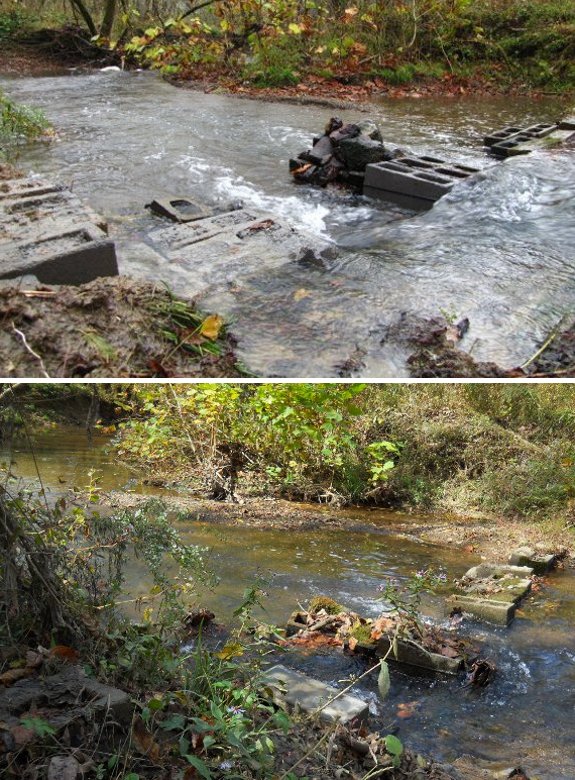
Cinder block creek crossing update
The cinder
block stepping stones
have held up nicely over the last year.
It turned out to be a huge
improvement allowing us to step over the deep section 90 percent of the
time.
A more stable solution would
involve a large drainage pipe to let the bulk of the creek flow
through. We heard of a neighbor trying such a trick only to have it
wash out after the first big storm.
Want more in-depth information? Browse through our books.
Or explore more posts by date or by subject.
About us: Anna Hess and Mark Hamilton spent over a decade living self-sufficiently in the mountains of Virginia before moving north to start over from scratch in the foothills of Ohio. They've experimented with permaculture, no-till gardening, trailersteading, home-based microbusinesses and much more, writing about their adventures in both blogs and books.
Want to be notified when new comments are posted on this page? Click on the RSS button after you add a comment to subscribe to the comment feed, or simply check the box beside "email replies to me" while writing your comment.


Mark,
I've looked at the way you positioned the cinder blocks and am wondering what would happen if you turned them so that instead of having the long section going with the water flow, you turned them going across and then turned them 1/4 turn so that the water would run through the holes. It seems that this would make less water pressure on the cinder blocks. You might need to put two together for surer footing that way, but you would then step on a flatter surface.
Sheila --- We considered turning the blocks on their sides, but we wanted to go two high in many places, and they stack better if you put them rightside up with a post in the middle and concrete to hold them together. I think it gives us better traction this way too since the rough concrete gets slippery slower than the flat side of the block. (We've laid blocks in various ways in the creek over the years and walked on them, which is where I get my slipperiness data.)
Olan --- You might enjoy reading this post and this post, which explain our creek's flood potential and why we settled on the option we did.
I have been reading your blog for some time. And I am a bit ashamed to admit that I think my favorite posts are the ones that involve the cinder block crossing.
--It just reminds me of my days living on a farm, where there was always a an issue (often involving water)and after a million trials finally the problem would be solved once and for all... Your saga brings back 'floods' of memories, so thanks for the updates